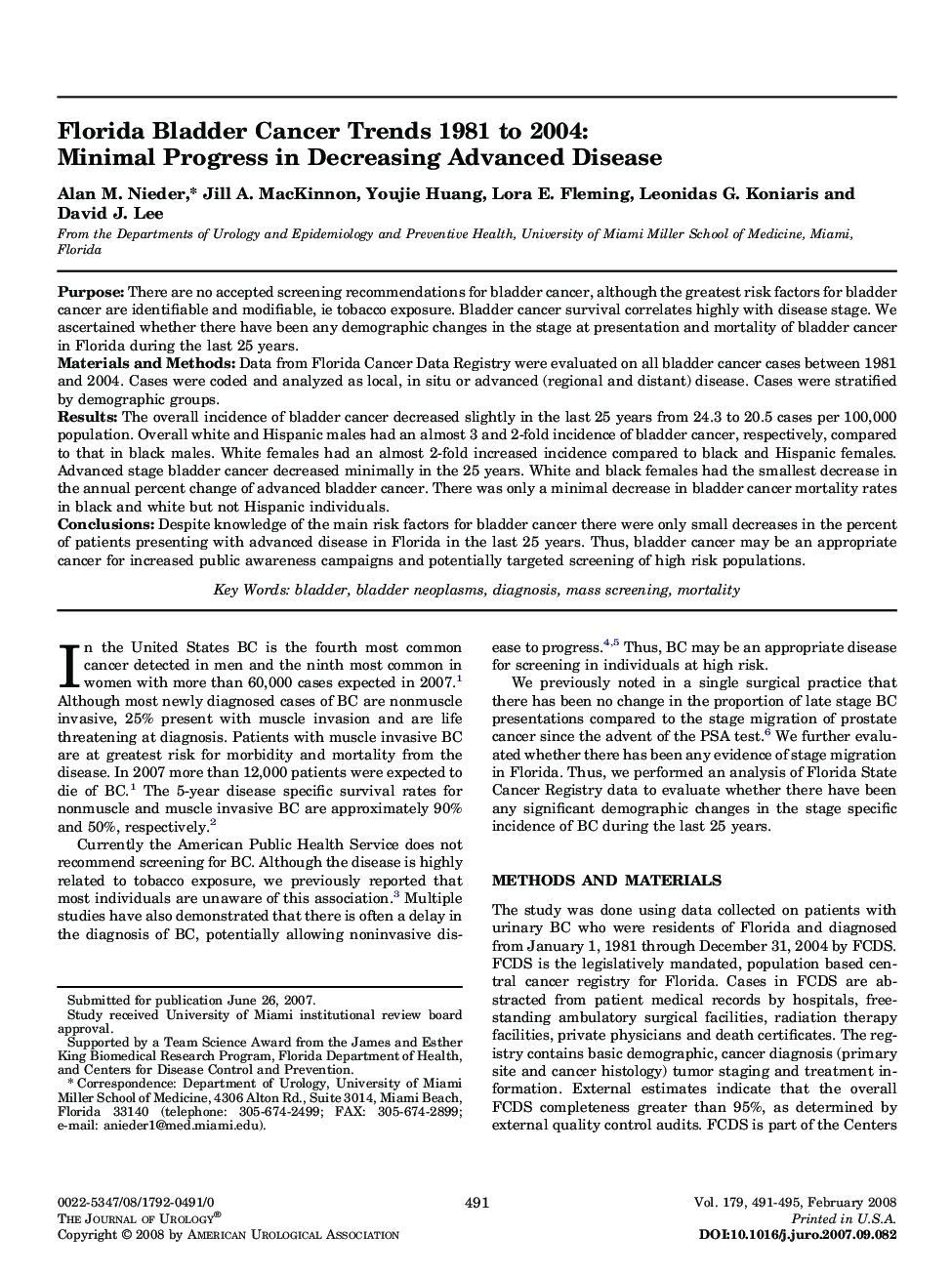| Article ID | Journal | Published Year | Pages | File Type |
|---|---|---|---|---|
| 3874352 | The Journal of Urology | 2008 | 5 Pages |
PurposeThere are no accepted screening recommendations for bladder cancer, although the greatest risk factors for bladder cancer are identifiable and modifiable, ie tobacco exposure. Bladder cancer survival correlates highly with disease stage. We ascertained whether there have been any demographic changes in the stage at presentation and mortality of bladder cancer in Florida during the last 25 years.Materials and MethodsData from Florida Cancer Data Registry were evaluated on all bladder cancer cases between 1981 and 2004. Cases were coded and analyzed as local, in situ or advanced (regional and distant) disease. Cases were stratified by demographic groups.ResultsThe overall incidence of bladder cancer decreased slightly in the last 25 years from 24.3 to 20.5 cases per 100,000 population. Overall white and Hispanic males had an almost 3 and 2-fold incidence of bladder cancer, respectively, compared to that in black males. White females had an almost 2-fold increased incidence compared to black and Hispanic females. Advanced stage bladder cancer decreased minimally in the 25 years. White and black females had the smallest decrease in the annual percent change of advanced bladder cancer. There was only a minimal decrease in bladder cancer mortality rates in black and white but not Hispanic individuals.ConclusionsDespite knowledge of the main risk factors for bladder cancer there were only small decreases in the percent of patients presenting with advanced disease in Florida in the last 25 years. Thus, bladder cancer may be an appropriate cancer for increased public awareness campaigns and potentially targeted screening of high risk populations.
